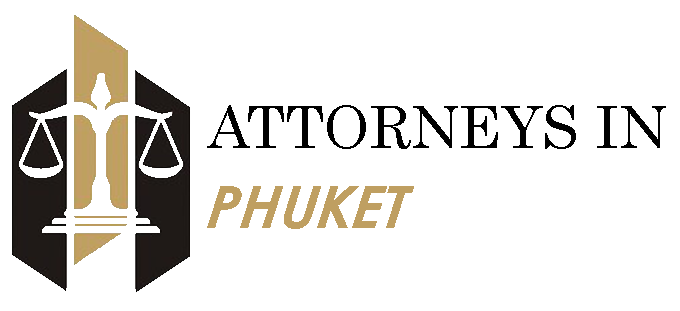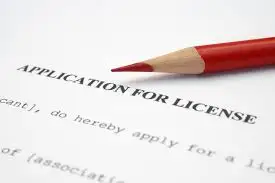Personal injury claims in Thailand encompass a range of legal cases where individuals seek compensation for injuries caused by the negligence or wrongful actions of others. Understanding the legal framework, types of claims, the process of filing a claim, and recent developments in Thai law is essential for both claimants and defendants. This guide provides a comprehensive overview of personal injury claims in Thailand, covering the key aspects and implications for all parties involved.
Legal Framework for Personal Injury Claims in Thailand
1. Civil and Commercial Code (CCC)
The primary law governing personal injury claims in Thailand is the Civil and Commercial Code (CCC). It provides the basis for seeking damages for injuries resulting from negligence, intentional acts, or other wrongful conduct. Key sections of the CCC relevant to personal injury include provisions on tort liability and the obligation to compensate for harm caused to others.
2. Consumer Protection Act
For cases involving defective products or services, the Consumer Protection Act provides additional avenues for seeking compensation. This law protects consumers from harm caused by unsafe products or negligent services, allowing them to file complaints with the Consumer Protection Board.
3. Public Health Act
The Public Health Act regulates safety standards in public spaces and businesses. Violations of these standards that result in personal injury can form the basis of a claim.
Types of Personal Injury Claims
Personal injury claims in Thailand can arise from various situations, including but not limited to:
1. Traffic Accidents
Traffic accidents are a common source of personal injury claims. Victims of car, motorcycle, or pedestrian accidents can seek compensation from the at-fault driver or their insurance company. Compensation can cover medical expenses, lost wages, and pain and suffering.
2. Workplace Accidents
Employees injured on the job can file claims under Thailand’s workers’ compensation system. In cases where the employer’s negligence contributed to the accident, additional compensation may be sought through a civil lawsuit.
3. Medical Malpractice
Patients who suffer injuries due to medical errors, misdiagnosis, or negligence by healthcare providers can file medical malpractice claims. These claims require demonstrating that the healthcare provider failed to meet the accepted standard of care.
4. Product Liability
Claims can be made against manufacturers, distributors, or retailers for injuries caused by defective or unsafe products. The Consumer Protection Act provides a framework for these types of claims.
5. Slip and Fall Accidents
Property owners have a duty to maintain safe premises. Injuries resulting from slip and fall accidents due to hazardous conditions on someone else’s property can lead to personal injury claims.
6. Assault and Battery
Victims of intentional harm, such as assault or battery, can file personal injury claims against the perpetrator. These claims may include compensation for medical expenses, lost income, and emotional distress.
Filing a Personal Injury Claim
1. Initial Steps
If you are injured and believe you have a personal injury claim, the first step is to seek medical attention and document your injuries. Collecting evidence, such as photographs, witness statements, and police reports, is crucial for supporting your claim.
2. Consulting a Lawyer
Consulting with a lawyer who specializes in personal injury law is highly recommended. A lawyer can help assess the strength of your claim, gather necessary evidence, and navigate the legal process.
3. Filing a Complaint
To initiate a personal injury claim, you must file a complaint with the appropriate court. The complaint should detail the circumstances of the injury, the defendant’s alleged negligence, and the damages sought.
4. Settlement Negotiations
Many personal injury claims are settled out of court through negotiations between the parties involved. A settlement can provide faster compensation without the need for a lengthy trial. Your lawyer can negotiate on your behalf to ensure a fair settlement.
5. Court Proceedings
If a settlement cannot be reached, the case will proceed to court. Both parties will present evidence and arguments, and the court will determine liability and the amount of compensation, if any.
Compensation in Personal Injury Claims
1. Economic Damages
Economic damages cover the quantifiable financial losses resulting from the injury, including:
- Medical Expenses: Costs of medical treatment, rehabilitation, and future medical care.
- Lost Wages: Income lost due to the inability to work as a result of the injury.
- Property Damage: Costs of repairing or replacing damaged property.
2. Non-Economic Damages
Non-economic damages compensate for intangible losses, such as:
- Pain and Suffering: Physical pain and emotional distress caused by the injury.
- Loss of Consortium: Impact on the claimant’s relationship with their spouse or family.
- Loss of Enjoyment of Life: Diminished quality of life due to the injury.
3. Punitive Damages
In cases of gross negligence or intentional harm, punitive damages may be awarded to punish the defendant and deter similar conduct in the future.
Challenges and Considerations
1. Proving Negligence
One of the main challenges in personal injury claims is proving that the defendant was negligent and that this negligence caused the injury. This often requires expert testimony and substantial evidence.
2. Statute of Limitations
The statute of limitations for personal injury claims in Thailand is generally one year from the date of the injury. However, this period can vary depending on the specific circumstances and type of claim. It is crucial to file your claim within this timeframe to avoid losing your right to compensation.
3. Comparative Fault
Thailand follows the principle of comparative fault, which means that if the claimant is found partially responsible for the injury, their compensation may be reduced proportionately. For example, if the claimant is found to be 30% at fault, their compensation will be reduced by 30%.
4. Insurance Issues
Dealing with insurance companies can be complex, as they often aim to minimize payouts. Having legal representation can help ensure that your rights are protected and that you receive fair compensation.
5. Cultural Factors
Cultural attitudes towards litigation can influence the willingness of individuals to pursue personal injury claims. In some cases, victims may be reluctant to seek compensation due to social stigma or fear of confrontation.
Recent Developments and Reforms
1. Legal Reforms
Recent legal reforms in Thailand have aimed to enhance the protection of personal injury victims. These reforms include stricter regulations on workplace safety, improved consumer protection laws, and greater accountability for medical malpractice.
2. Public Awareness
There has been an increasing focus on raising public awareness about personal injury rights and the legal avenues available for seeking compensation. Educational campaigns and legal aid initiatives aim to empower victims to pursue justice.
3. Technology and Evidence
The use of technology in gathering and presenting evidence has improved the prospects of personal injury claims. Dashcams, CCTV footage, and digital records can provide critical evidence to support claims.
Conclusion
Personal injury claims in Thailand involve navigating a complex legal landscape, but understanding the legal framework, types of claims, and the process of filing a claim can help victims seek justice and fair compensation. With recent developments and reforms enhancing protections for injury victims, the prospects for successful claims are improving. Whether dealing with traffic accidents, workplace injuries, medical malpractice, or other types of personal injuries, consulting with a legal professional and gathering robust evidence are essential steps in achieving a favorable outcome.
Related posts:






